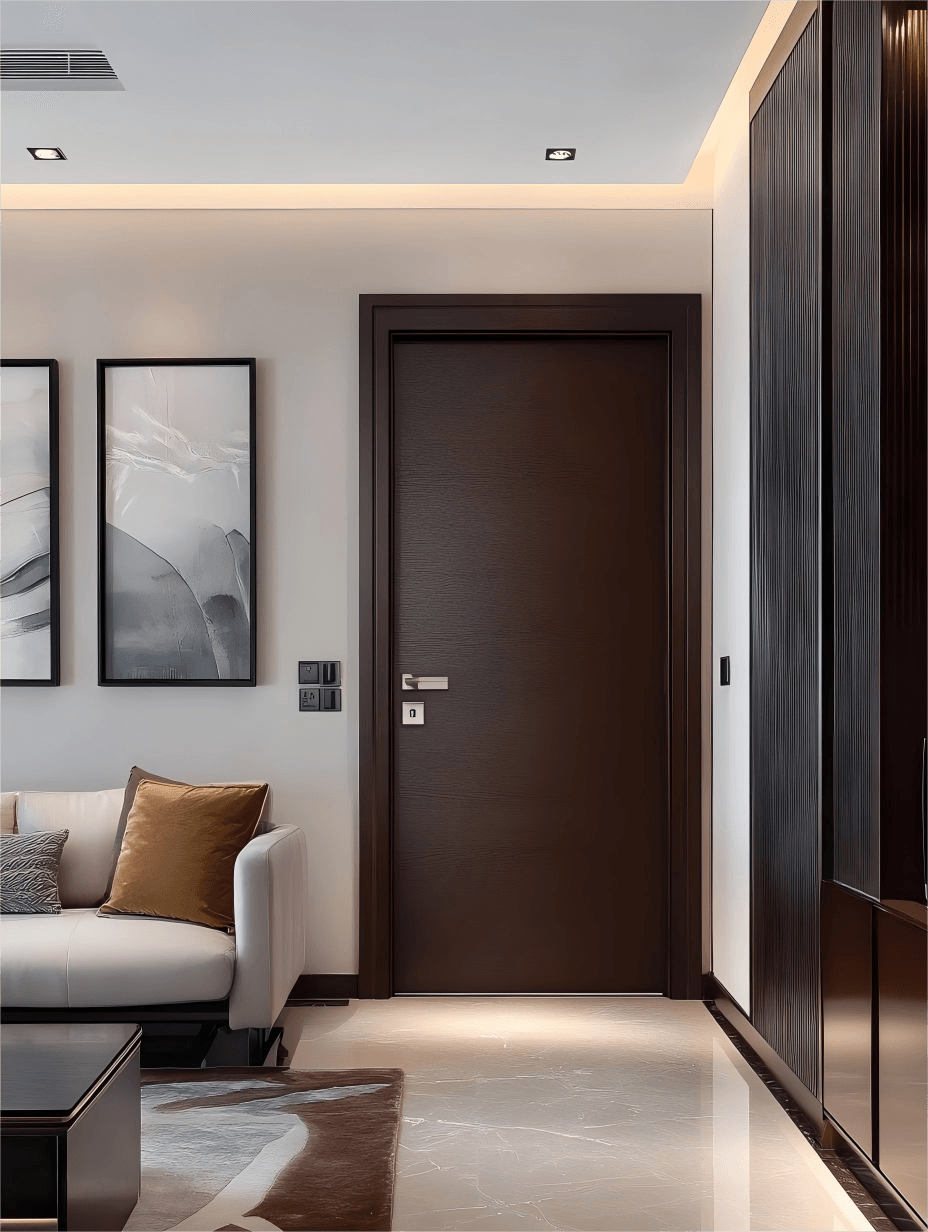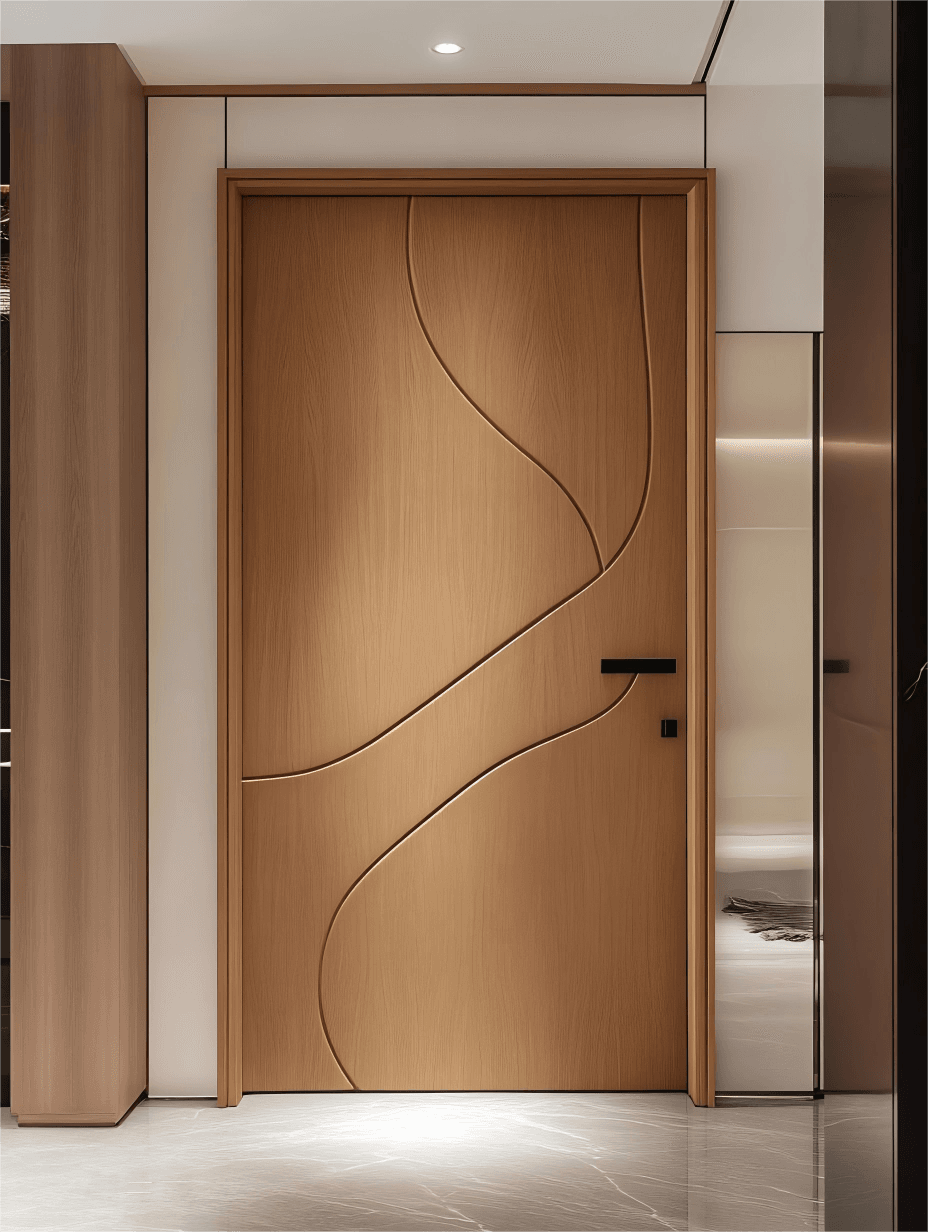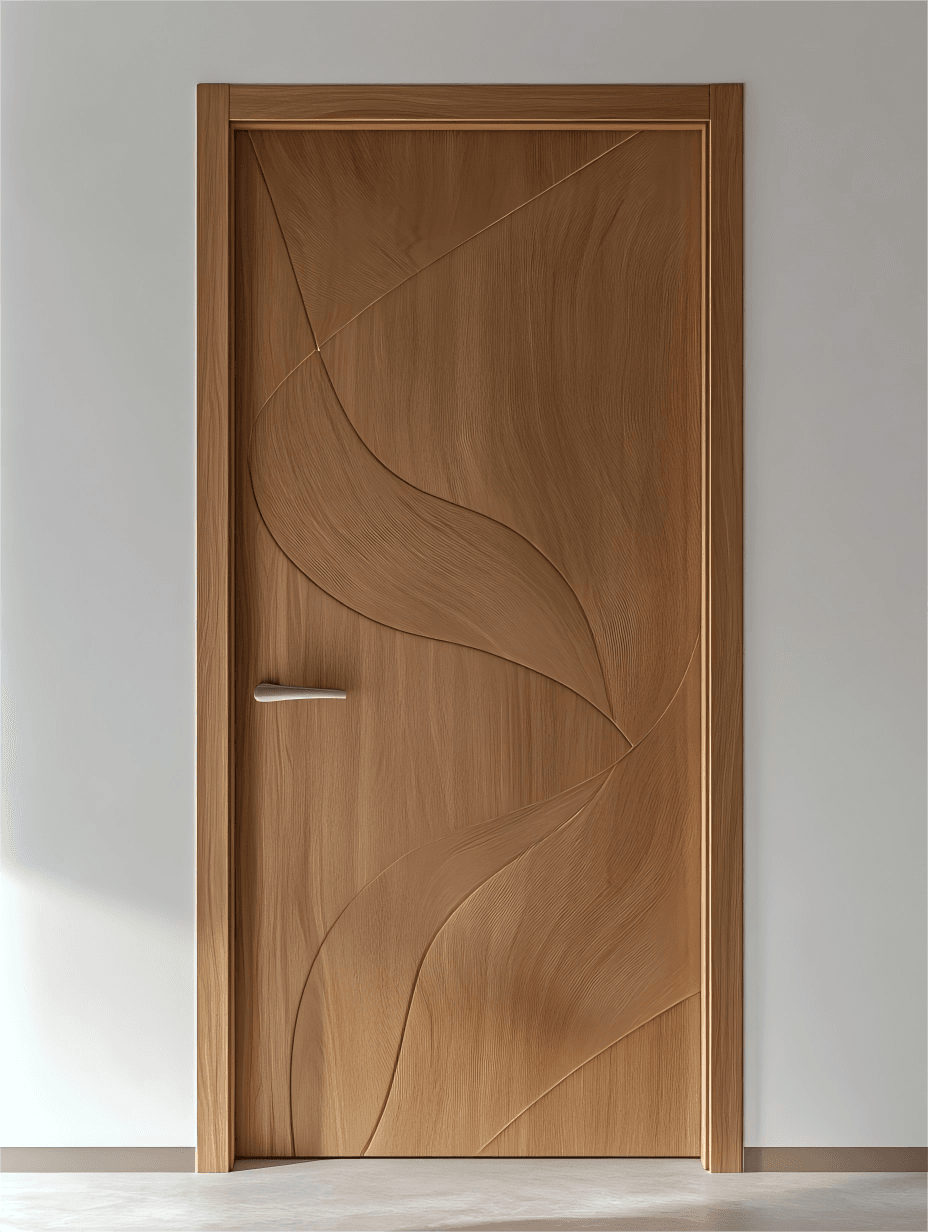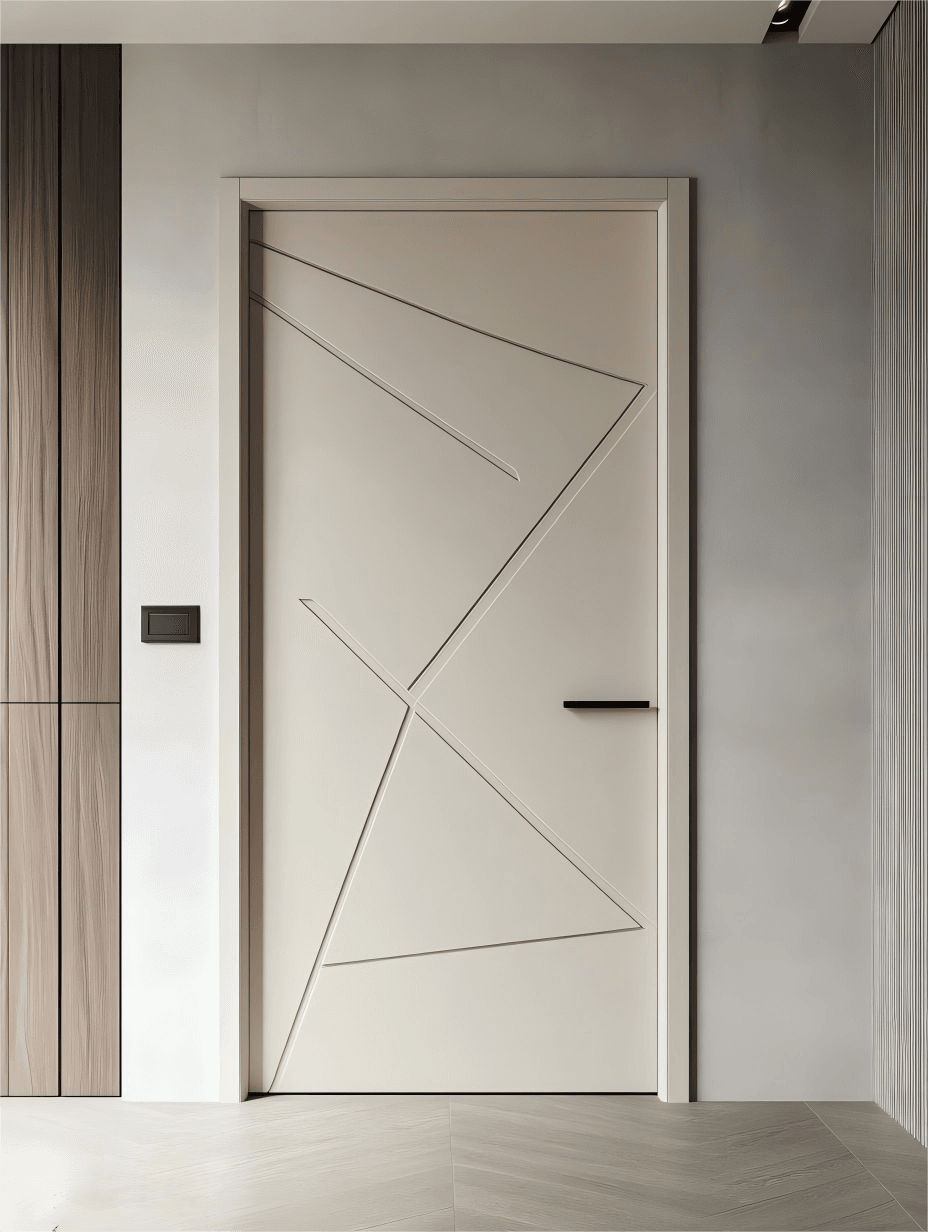Seasonal Trends in Solid Wood Door Designs: What's Hot for the Upcoming Year
Solid Wood Door Style of the Year: Anticipating the design hotspots and art of living in 2026
When a door is no longer just a space divider, but a carrier of emotion and aesthetics, its design will be closely linked to the pulse of the times. 2026 solid wood door design is moving from static functionality to dynamic "emotional symbiosis", presenting a fascinating picture of nature, technology and culture. The following trends will lead the way in the coming year.

Colour mood: low saturation natural colours become mainstream
Door is the space of the "first visual landing point", its colour directly defines the emotional tone of the space.
- Trend core: nearly 80% of designers choose low saturation natural colours (such as light grey brown, beige apricot, oatmeal) as the base colour of the door. These colours relieve visual fatigue and create a warm and healing atmosphere, and are particularly suitable for pairing with modern minimalist and wabi-sabi styles.
- Innovative application: Through the process of "two-colour staining" or "partial colour blocking", subtle tonal layers are formed on the surface of the door panels, so that the door becomes a canvas for art on the wall.
- Consumer value: Low-saturation colours have a higher compatibility with a wide range of soft furnishing styles, and can be enlivened by a small number of highly saturated accents (e.g., door frames, handles, bright colours).

The material revolution: the integration of natural texture and functional coatings
Solid wood door "natural sense" is still the focus of consumer pursuit, but the process and environmental standards have been fully upgraded.
- The natural texture is preserved: the original grain of the wood, knots and even the defects of the two-coloured wood are no longer hidden, but become more storytelling because of their "imperfection". The depth of walnut, the ruggedness of oak, the subtlety of maple become symbols of individual aesthetic expression.
- Surface Treatment Innovation: Wood Wax Oil Painting: Gradually replacing traditional PU/UV paints, wood wax oil extracted from plants is more environmentally friendly and penetrates into the interior of the wood, enhancing durability while retaining tactile authenticity.
- Functional coatings: anti-fingerprint, smudge- and scratch-resistant nano-coatings are used in high-end ranges, especially for homes with children or pets.
- Material mix and match: solid wood and metal (such as brushed brass), glass (long rainbow glass + wood frame), and even ceramic inlay cross-border combination, to enhance the artistry of the door and the sense of light permeability.

Design Forms: Elegant Curves and Dynamic Growth Structures
The shape of the door is moving away from a single rectangle towards a more fluid and adaptable design.
- Curve aesthetics: Influenced by the Art Deco and Art Nouveau movements, curved door heads, rounded door frames, and wavy door panels have become highlights. These curves not only soften the lines of the space, but also visually enhance the height of the floor, which is suitable for small and retro style homes.
- Dynamic growth design:
- Variable structure: Through removable partitions and hidden slides, the door can be switched in multiple modes of "open-semi-partition-closed" to meet the needs of LDK (living room-dining room-kitchen) integrated space.
- Growing interface: the door frame is reserved for installation, which is convenient for adding smart locks, sensor lights or age-adapted handrails to meet the changes in the life cycle of the family.

Cultural Expression: Deconstruction of New Chinese Style and Revival of Non-Heritage Craftsmanship
Oriental aesthetics is no longer limited to symbolic expression, but reconstructs tradition through modern design language.
- Deconstructive techniques:
- Transform the "bite logic" of mortise and tenon structure into the design of removable door panels; transform the "white space" of landscape painting into the openwork light and shadow game on the door panels.
- Application of non-heritage techniques:
- The combination of lacquer technology and solid wood creates a warm and magnificent coating on the door surface; the hand-carved local patterns (such as zigzag pattern and ice crack pattern) become the eye-catching strokes, highlighting the low-key cultural self-confidence.

Inspiration for Manufacturers and Designers
1. Environmental protection is the bottom line, not an option: from 2025 onwards, 100% of new homes must use green building materials, and companies must give priority to purchasing FSC-certified timber and disclose carbon footprint data.
2. Customisation is deepening: 62.3% of young consumers are willing to pay a premium for unique designs, and the provision of "modular options" (door type + colour + hardware + intelligent functions) has become the key to competitiveness.
3. Full life-cycle service: from measurement, installation to post maintenance, providing "long-term accompanying" service to enhance customer adhesion.

Conclusion:The future of the door as an emotional anchor for space
In 2026, the solid wood door has evolved from the "guardian of function" to the "lyrical poet of space". It soothes emotions with colour, conveys temperature with material, guards daily life with intelligence and connects memories with culture. For manufacturers, the only way to win a head start in this silent space revolution is to integrate aesthetics, technology and sustainability; for consumers, choosing a door is a declaration of a lifestyle.
Seize the trend, starting with a door - make every opening and closing a dialogue with the good life.